Which Tree Would You Choose?
Which Tree Would You Choose?
The three trees below are all 2022 grafted Li. The trunk of the tallest is about 500 mm high.
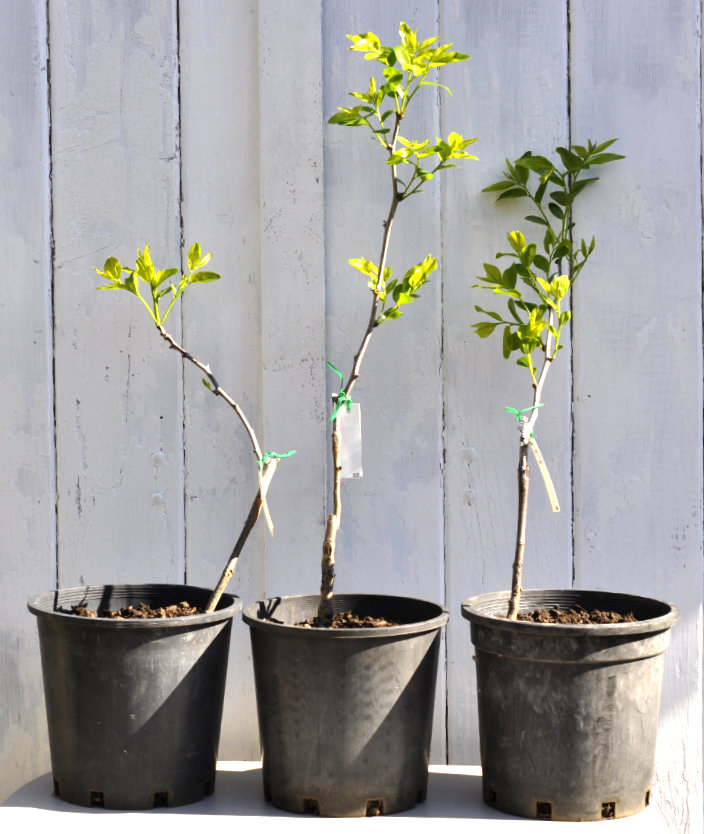
© Optimate Group Pty Ltd
These and a few others had lovely thick roots, but these were not especially long or dense. There was absolutely nothing wrong with the roots or the trees, but cosmetically they weren’t a great look to send bare-rooted. People unfamiliar with these trees would have felt ripped-off.
And so, last year I potted these three and their cohort into pots of 200 mm 190 mm diameter and height, and kept them aside to develop their roots further. Every one of these “Baby Li” trees flowered and fruited last year, and will do so again this year. Some already have very visible flower buds forming! They are all available for sale as potted trees.
Now, if you were presented with the above three, which would you choose? This isn’t a trick question, and there is no right or wrong answer, but I’ll take a punt that pretty much everyone would choose the middle one. It’s the tallest, quite straight, and with large glossy leaves. It really is a beautiful, healthy tree with a lovely presence.
You may be surprised to learn that I would actually ask you to seriously consider the one on the left! Yes, the crooked, smallest, less-leafy one of the three.
But why?
I would ask you to at least consider the one on the left simply because it was the only one exhibiting a particular type of growth none of the others had, at the time of the photo at least. That little runt is the only one putting out an extension branch.
Not many people realise that jujube trees have four different branch types! (And it is my aim this year to really cover this in great detail.) Even a seasoned arborist picking up his trees last month had never heard of this — and was in utter amazement as I pointed them out to him. (He in turn, as a former international judge, told me many fascinating things about bromeliads!)
Four different branch types, of which an extension branch — the one that increases the height and width of the tree — is but one.
That little fellow on the left was the only one growing an extension branch, meaning it will likely double if not triple in height by end of this season. Yes, those extension shoots can really extend once they get going!
Every single one of its pals on the other hand, if they don’t put out extension growth this season, will end next season the exact same height as they began this season. And, when they drop their deciduous fruiting branchlets (another of the four branch types) in winter next year, they will barely look much different from the stick-like appearance they began as!
It can be a disappointing experience to the uninitiated, but don’t blame yourself or the tree should this happen to you. You’ve not done anything wrong, and nor has the tree. It just wasn’t ready to have that particular bud trigger, is all. But when that bud does trigger, you will be amazed at how much growth it can put out! It is not unusual for a young tree to double or sometimes triple its height in one season.
I’ll show below how to recognise this extension growth, but you may now understand why I would have asked you to at least consider the one on the left! And I say “at least consider” because it isn’t necessarily the right one for you. Either of the other two may be the better choice for you. This is because those two trees are putting out plenty of fruiting branchlets, the only branch type on which the flowers form and fruit grows.
As I said, there is no right or wrong answer. What is most important in having these details pointed out, is that you would now be making an informed decision, rather than going on looks — which works for pretty much every other plant out there, but not necessarily for a jujube tree!
Recognising Extension Growth
Let’s zoom in on the little one on the left:
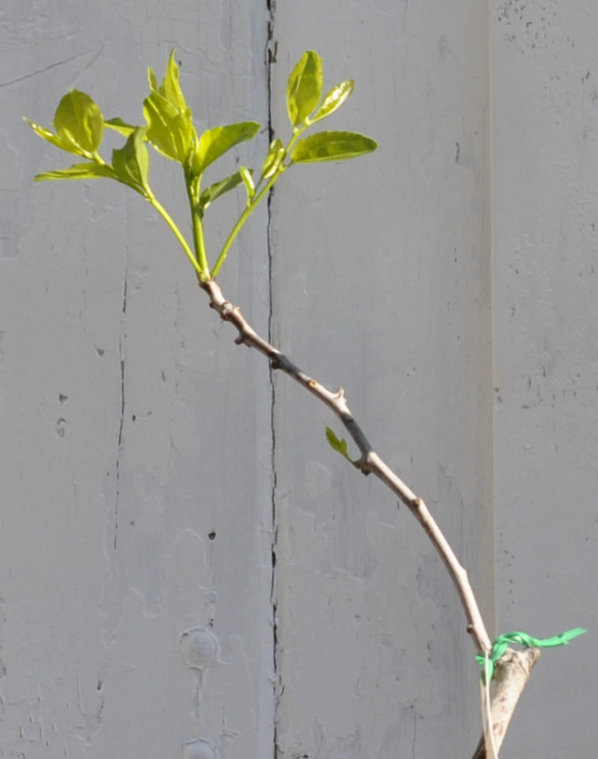
© Optimate Group Pty Ltd
This is the classic coming-to-life look of a young jujube tree — shoots of vibrant glossy green emerging out of a thin stick. You have to wonder where they all came from!
Let’s zoom in even closer:
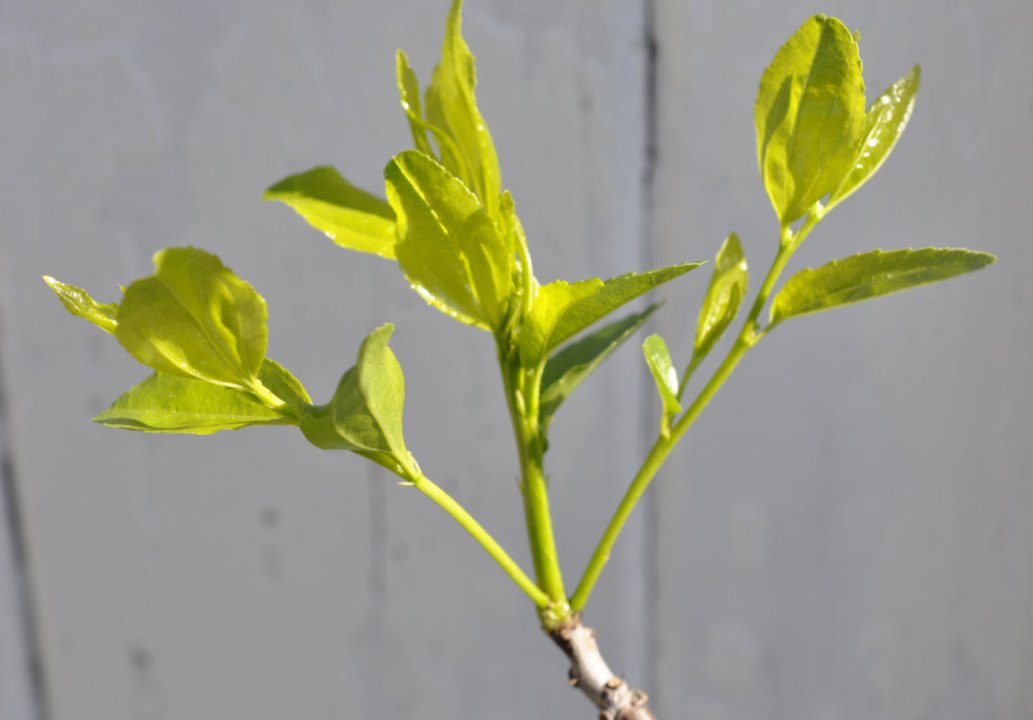
© Optimate Group Pty Ltd
and again from a different angle:

© Optimate Group Pty Ltd
and from a different angle again:

© Optimate Group Pty Ltd
Can you see how much thicker one of those shoots is? Compare this with the following photos, all of the other two trees:
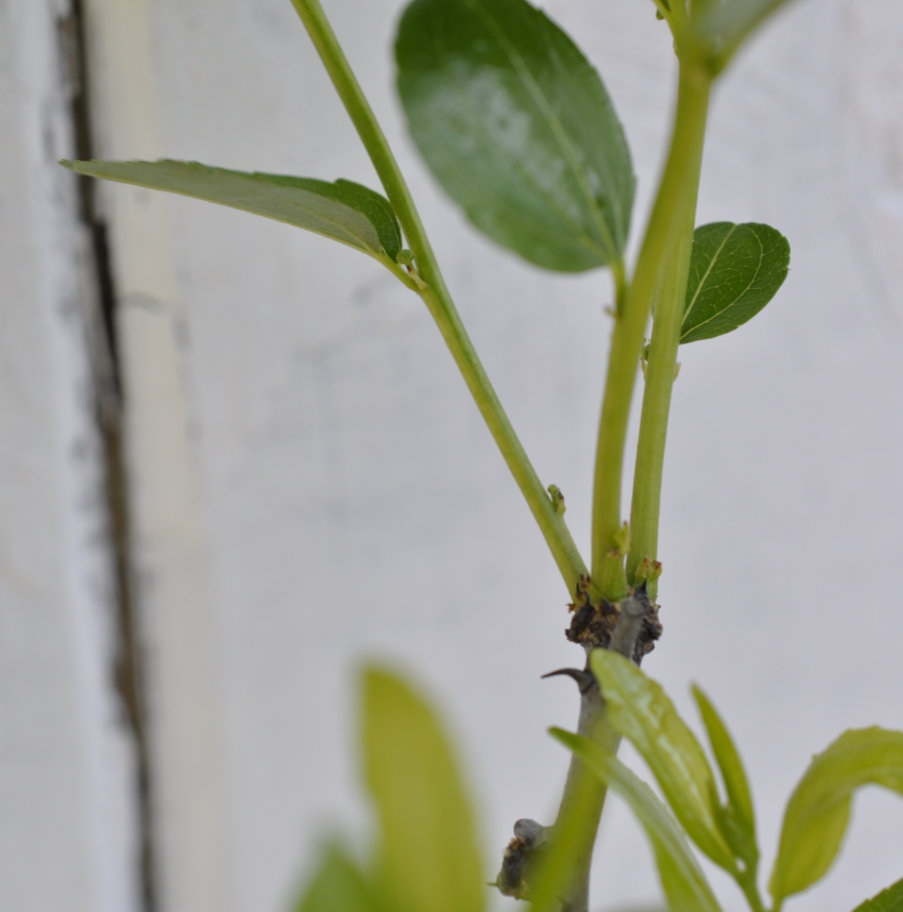
© Optimate Group Pty Ltd
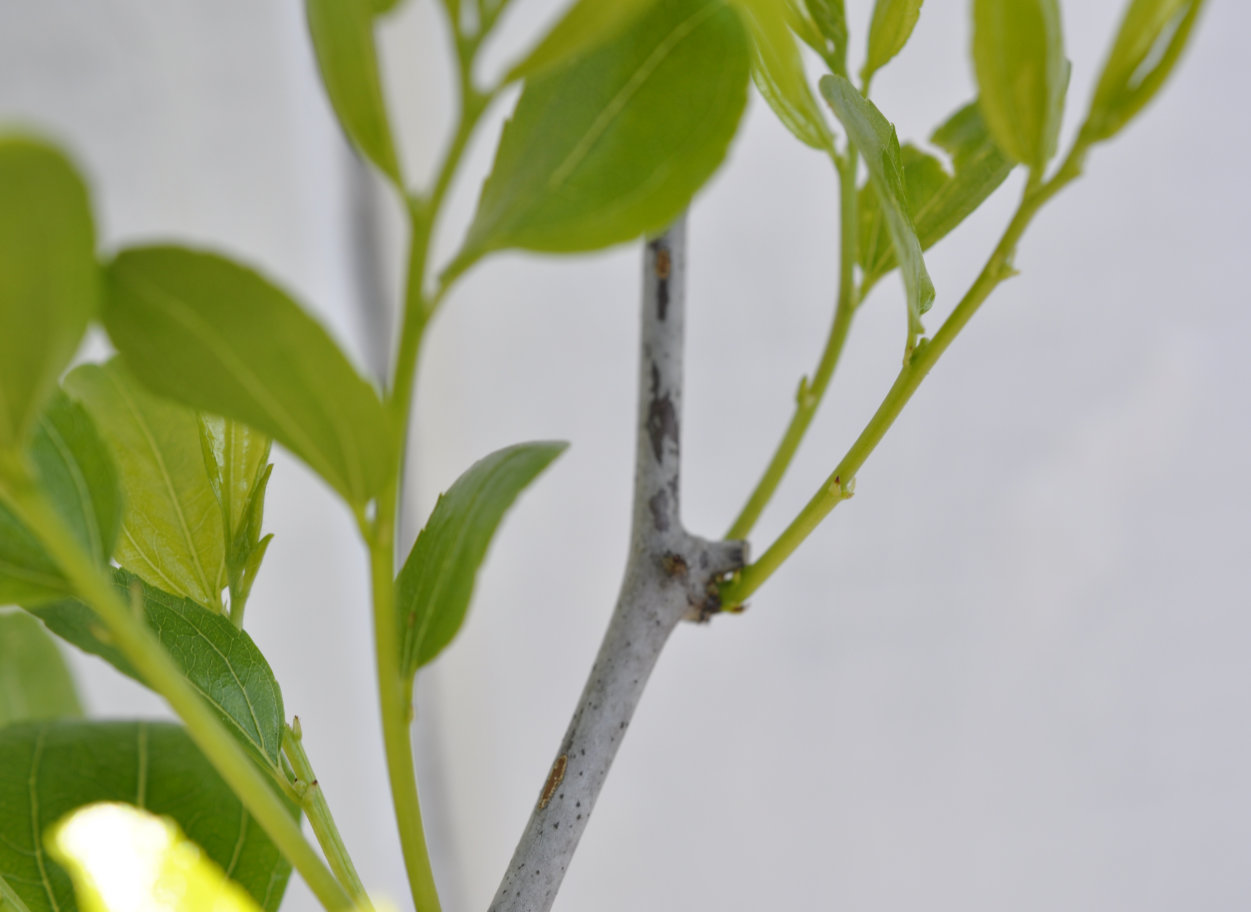
© Optimate Group Pty Ltd

© Optimate Group Pty Ltd

© Optimate Group Pty Ltd

© Optimate Group Pty Ltd
Can you see how uniform in thickness every single one of those are? Those are all fruiting branchlets. The sole thick one is the only extension branch amongst the three. Another clue is how more “chunky” that extension shoot is, with another shoot coming off about halfway up on the left, and with that clump of shoots at its top:
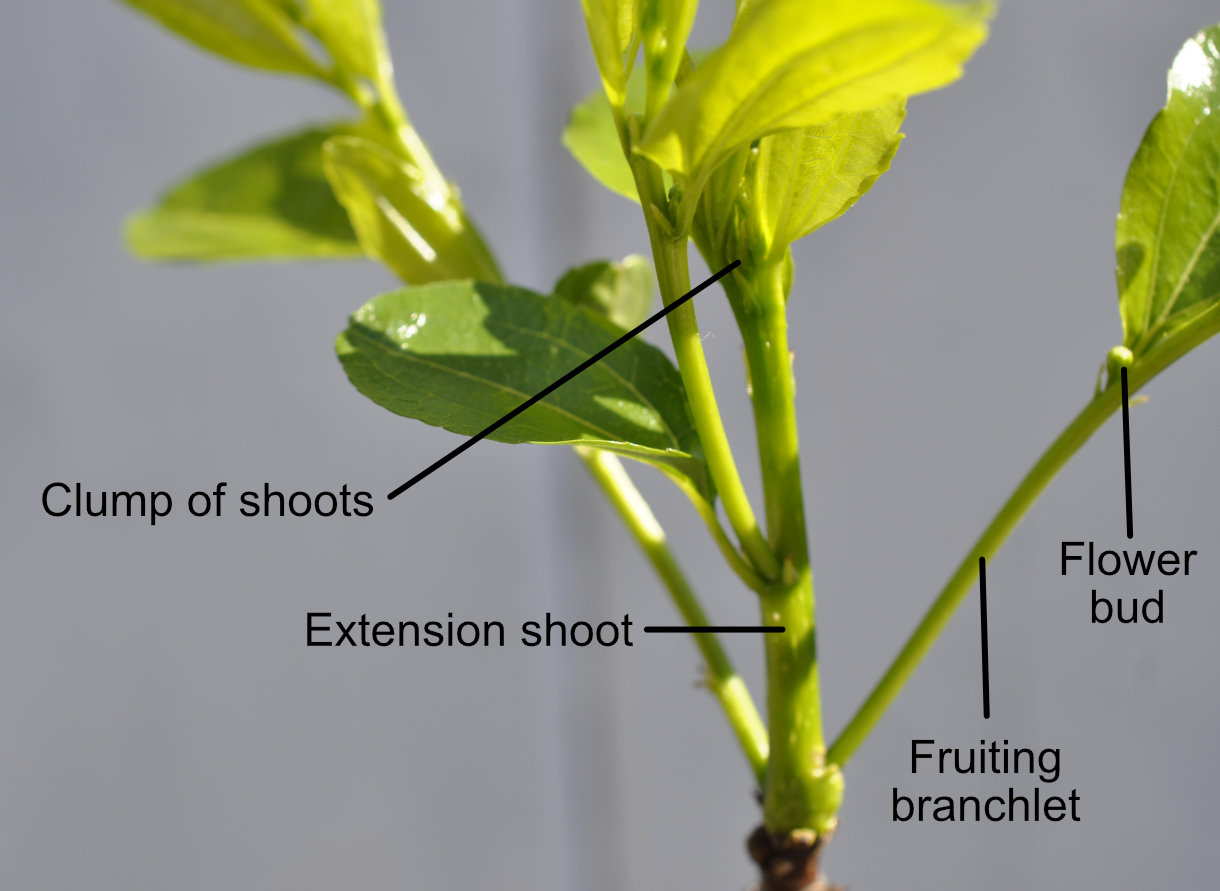
© Optimate Group Pty Ltd
And can you see the little flower bud on the far right shoot? That alone is proof that that the shoot at far-right is a fruiting branchlet, as this is the only branch type to bear flowers and fruits. We shall cover the peculiarities of fruiting branchlets — and the even more odd fruiting mother branches — in due course!
About the Author
BSc(Hons), U.Syd. - double major in biochemistry and microbiology, with honours in microbiology
PhD, U.Syd - soil microbiology
Stumbled into IT and publishing of all things.
Discovered jujube trees and realised that perhaps I should have been an agronomist...
So I combined all the above passions and interests into this website and its blog and manuals, on which I write about botany, soil chemistry, soil microbiology and biochemistry - and yes, jujubes too!
Please help me buy a plant if you found this article interesting or useful!